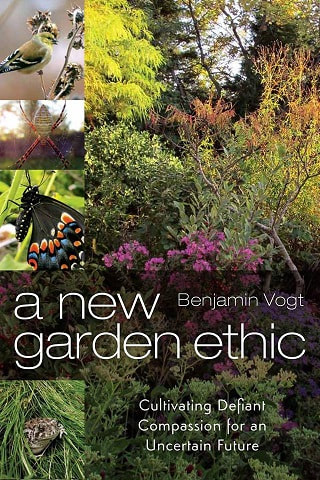Gardens aren't political statements? Sure they are. If gardens are art -- and that's how we talk about them 99% of the time (sigh) -- art has a long, lively tradition of being "political." And make no mistake, by "political" we mean thinking critically about our culture in whatever way we can: moral, ethical, socioeconomic, disrupting the status quo of systems of power, et cetera. Being "political" makes us uncomfortable, since it calls us out and asks us to look at ourselves and the world in a radical new way that stretches and challenges us. Gardens are revolutions in a time of mass extinction -- they are no longer simply pretty little paintings to stroll through. Being made uncomfortable, angry, and even despondent is the first step to waking from our human supremacism and speaking the language of life again.
And then I connected the above, in my head anyway, to something else I wrote a few days earlier:
Gardens full of native plants are acts of social justice, empathy, and then compassion for other species we've put on the brink, as well as fostering the physical and psychological health of our own species. Gardens are a resistance to a culture of narcissism and hubris. Gardens are more than art, more than beauty for us. Urban gardens, especially, are a rewilding (not a restoring) of the broken bonds between us all, an open conversation held again where we begin to remember the languages we've lost, ignored, or betrayed. When we speak leafcutter bee or bobwhite quail, we remember the chorus and our own language is enriched. Without the voices of the animate world in our daily lives, our existence is a pale, sick shadow.
Finally for kicks, here's a Tweet I tossed out yesterday:
If climate change and mass extinction aren't the first subjects we're addressing in garden design and horticulture, then these fields are a waste of time and perhaps shouldn't exist.
So there you go -- pretend this is a page from my book, or at least the second edition. What do you think? If you'd rather simply look at an image that may illustrate the above, then how about...



 RSS Feed
RSS Feed

